Fender benders happen. And, it turns out, many of them happen the same way.
While it’s always essential to take precautions behind the wheel, being extra aware of these common collisions could help you avoid them in the first place.
So here’s a breakdown of four of the most common types of collisions, according to the Insurance Institute for Highway Safety (IIHS), with driving tips to help you steer clear of trouble while out on the road.
Front-Impact Collisions
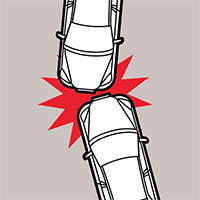 What They Are
What They Are
Front-impact collisions—when the front end of a vehicle hits another vehicle or something on the side of the road, like a tree or telephone pole—accounted for 57 percent of serious crashes in 2019, according to the IIHS.
How To Avoid Them
Front-impact crashes are often caused by slippery roads or other weather-related factors, so it’s important to adjust your driving to fit the conditions, says Russ Rader, IIHS’s senior vice president of communications. Translation: Drive slower in rain and snow, to give yourself more time to react if your car suddenly loses control. And avoid anything that could divert your attention from the road. “Stay off the cell phone, of course, but fiddling with the radio or even talking to a passenger can be a distraction,” says Rader. “Remain focused on the task at hand.” (See more surprising causes of distracted driving.)
Lane-keeping systems also help reduce the frequency of front-impact collisions, according to the IIHS. This feature alerts the driver or even automatically steers a car if it ventures outside of its lane.
Side-Impact Collisions
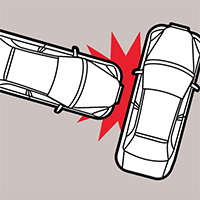 What They Are
What They Are
Side-impact collisions can be either a classic “T-bone” or a sideswipe. The former often occurs at intersections, usually as the result of some sort of confusion regarding which vehicle has the right of way. Sideswipes usually involve a side impact between cars driving parallel to one another in different lanes. According to the IIHS, 23 percent of serious crashes in 2019 were side-impact ones.
How To Avoid Them
Time-tested defensive-driving techniques can go a long way toward reducing your risk. To guard against the classic “T-bone,” be extra vigilant, and always look both ways at stop signs and stoplights—don’t speed to try to catch the yellow light. “When you’re late, you’re more likely to push it and run a red light,” says Rader. To help avoid a sideswipe, always check your blind spot before changing lanes and, when passing cars, be alert for other drivers changing lanes unexpectedly.
Rear-End Collisions
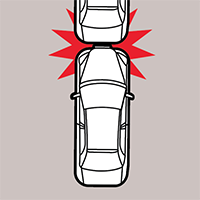 What They Are
What They Are
Motorists are prone to rear-end collisions in heavy commuter traffic on highways and thoroughfares. The most common causes are driving too fast or too aggressively, or failing to leave sufficient space between you and the vehicle in front of you, according to Rader.
How To Avoid Them
Watch your speed and give yourself plenty of distance, in case the driver ahead suddenly slams on the brakes. To avoid being rear-ended by tailgaters, slow down, move to the right lane if it’s safe to do so, and calmly let them pass. Today’s automatic braking technology can also help keep you safe. Forward-collision warning systems—which provide audible tones or visual alerts to help the driver swerve or brake before a collision occurs—can reduce rear-impact crashes.
Parking Lot Collisions
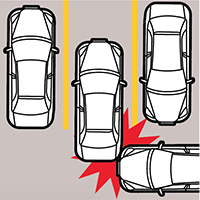 What They Are
What They Are
Dented bumpers are all too common in busy parking lots. They may happen when a car is backing out of a parking spot or where there are multiple cars moving in different directions.
How To Avoid Them
“In parking lots, it can be really difficult to see around you—especially when backing up,” says Rader. His advice: Take a moment to check out your surroundings before getting in the car to pull out of a parking space. If you can, park in a spot farther away from other cars. And if your vehicle has a rearview camera, that’s great—but don’t rely on technology alone to keep your ride scratch-free. “The image on the screen can be distorted by bright sunlight or shadows,” says Rader. “Always use your mirrors as well.”
If you’re ever in an accident (and we hope you never will be), you can have peace of mind knowing your GEICO auto insurance makes the claim process as smooth and painless as possible. You can report and track your claim online, over the phone or via the GEICO Mobile app—whichever is easiest for you. Plus, find out how GEICO’s convenient Auto Repair Xpress® program makes the process as simple as 1, 2, 3!
Read More: Lane-keeping and automatic braking aren’t the only safety innovations. Check out these 5 hi-tech safety features that could soon be standard.
By Rod O’Connor

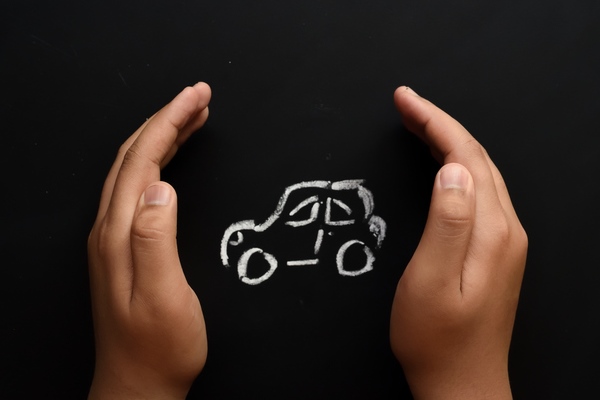


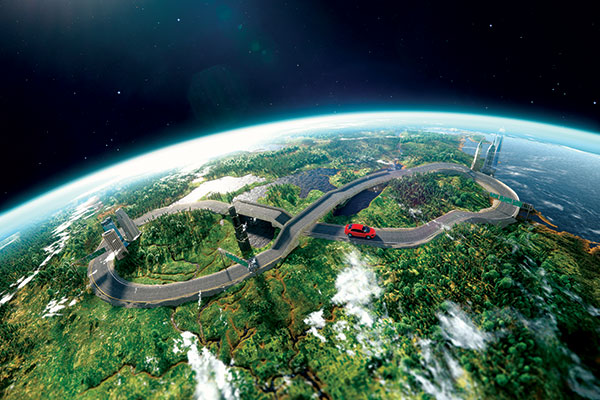

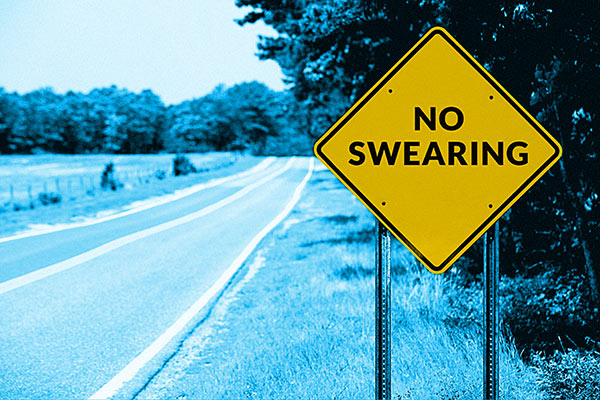

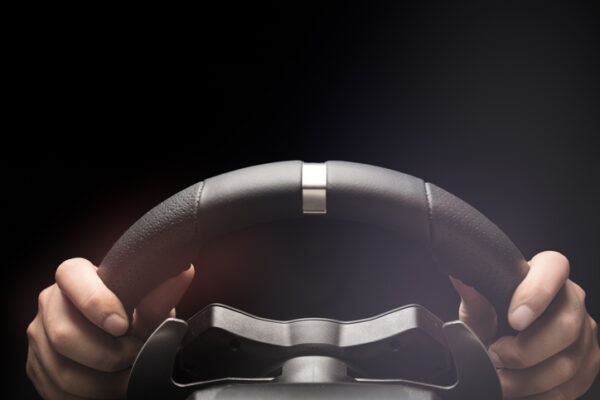
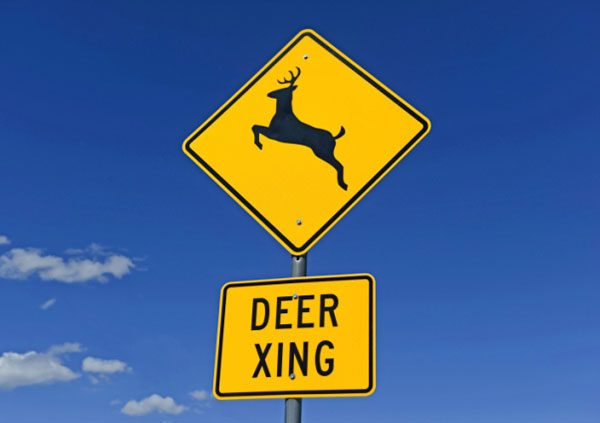
fransca reesen says,
Good info I go to drivers school every 3 years and learn some thing new every time and it saves money on my insurance
When i have a tailgater I turn my lights off and on looks like i,am braking there back off
DENISE TAYLOR says,
Very helpful, thank you Geico!
Joam M Eddy says,
One of the most common problems driving is people who follow the cars in front of them too close. I see this on a daily basis. Also cars cutting me off forcing me to practically run of the road or having to brake to avoid them hitting me. Then if the person behind me is tailgating their about ready to hit me from behind
New Mexico DMV needs to require people before the can renew their license needs,to update the written driving test. I see so many accidents because of the tailgating at high speeds
Louis Barron says,
Awesome learning tools. On another note, checking your rearview mirror frequently helps. Know your surroundings all four sides when driving. Your lanes on both sides (blind spot too), front and rear. Look for escape path’s incase of safety hazard(s). Look ahead of vehicle in front if possible.
Ann Wagner says,
This was well done and informative. Very helpful. One more reason for crashes — refusal to use blinkers when changing lanes or making turns. My personal pet peeve. Notice how many drivers speed past just to meet you at the same traffic light.
David Sohmer says,
I back INTO parking spots. Backing out, like at the mall, puts me at the mercy of oncoming cars due to the blind spots. Plus I am anxious about toddlers and children below my rear view sight line. Backing in keeps me in control and seems 100 percent safer than backing out. I hate backing out!!!
Peter says,
I also like backing into spaces. I find, however, that often cars following me don’t understand my intent when I’m setting up to back into a space. They follow too close and end up blocking me from backing up. Also, if I’m shopping for groceries, home improvement or other bulky items, backing into a parking space makes it very difficult to load things in the back of the car, while risking damage to other cars in the process.
DENISE TAYLOR says,
This is what I do daily, much safer.
Christine Seid says,
The tip on avoiding tailgaters is a good idea. I often feel pushed by the traffic around me and I’m not a slow poke at all. City traffic, while often slow, is full of drivers trying to beat the next light. Thanks for the tips; they’re all good.
BKS says,
It would be good if these suggestions would be advertised on tv. Also drivers need to use their turn signals more often.
PEARLINE BROWN says,
The information given is very interesting and very helpful and I appreciate your helping your clients how to avoid these types of accidents. THANK YOU GEICO.
Rafael A Faure says,
this is a good reminder that accident may happen and as a driver you should be aware always all the possibility that an accident may happen and as a driver you should take all the necessary precautions to avoid them.
Esmond Ryan says,
I practice safety,my cellphone is on the dashboard mostly on answer if my wife calls prefer listen to the radio,also I am very aware because in my all you do is defensive driving.
Edward Gardner says,
I do everything within my power to do these four tips about collisions. I do carry my cell phone while driving however I do not answer while I am driving if I have a passenger with me I do not look at them if we are talking that distracts me from keeping my eyes on the road and vehicles that might be around me. I very seldom Drive in a large city just too much traffic for me! I live in a rural neighborhood and do not have to drive very far to get to whatever store I might need to get something from. The vehicle I own now I have had since January 25th 2017 I have not put eight thousand miles on that car yet I’m close but not yet. How about another 500 miles before I reach 8000 Miles.
THOMAS BEARDSLEY says,
thanks, great info
Sharlene Mason says,
This is all well and good. And I do my best to always obey the rules of the road as well as those in life. But what do you do when others DON’T?????
Judy says,
This was a good refresher course. Always need to be updated on driving habits and how to improve them. This was very helpful.